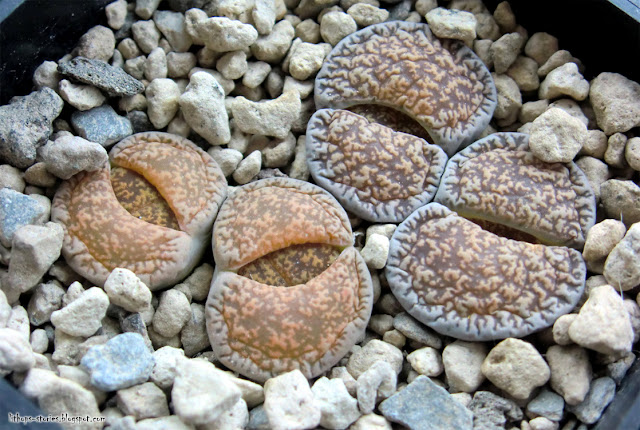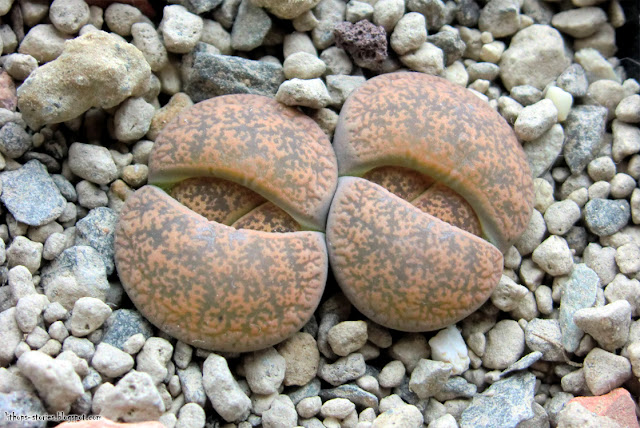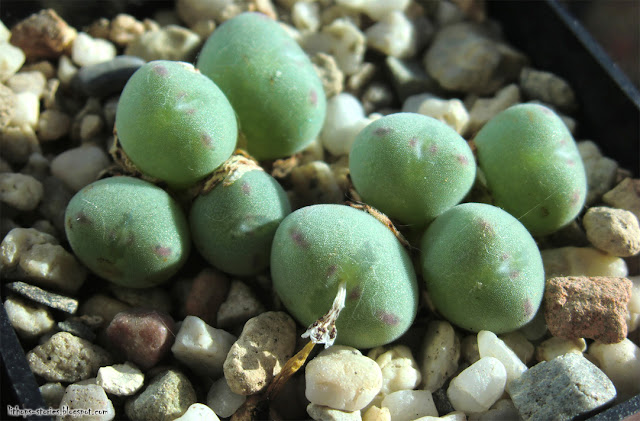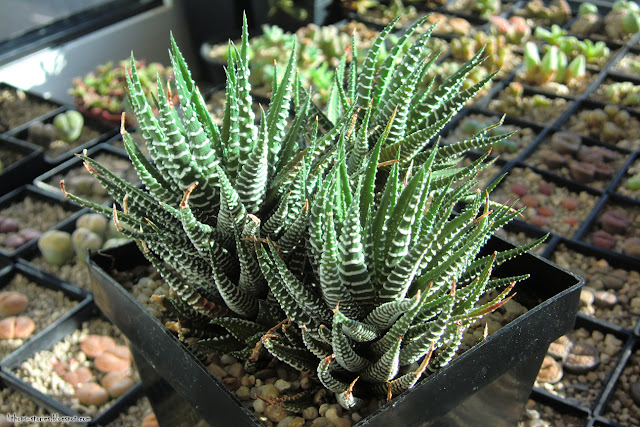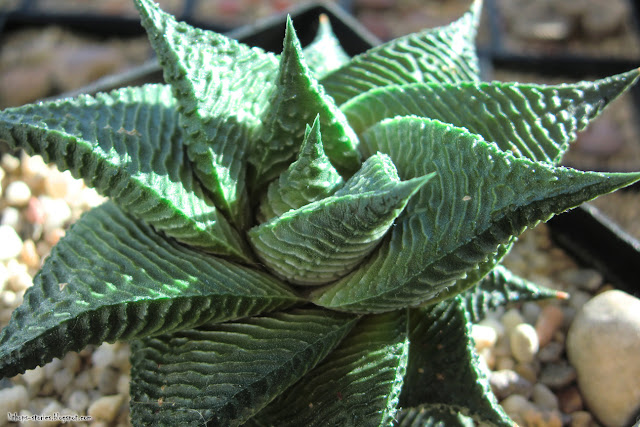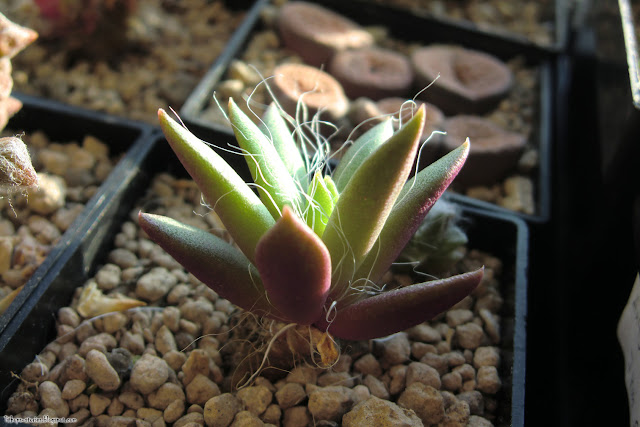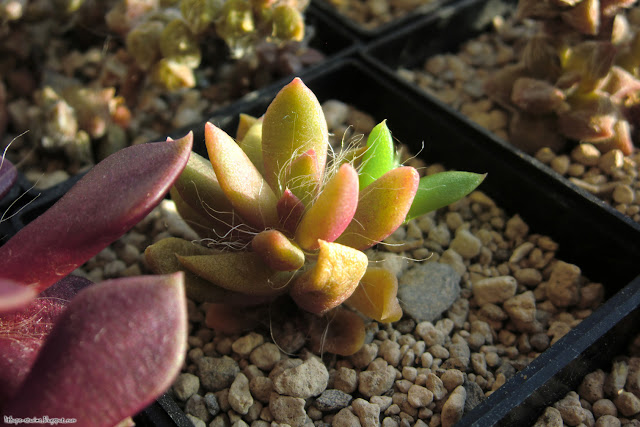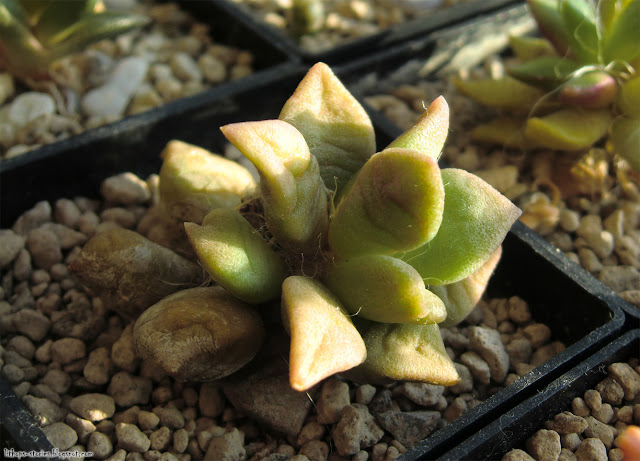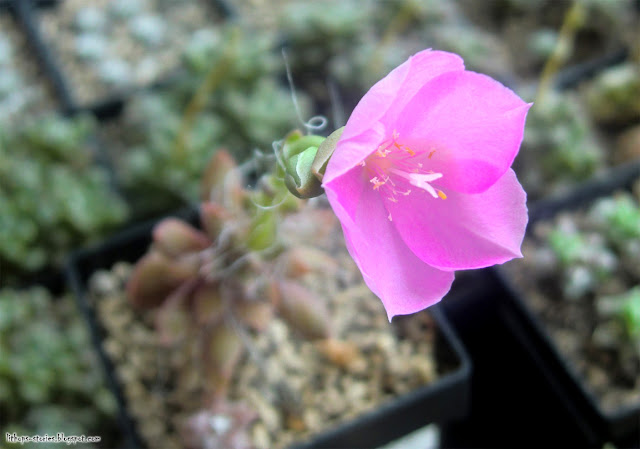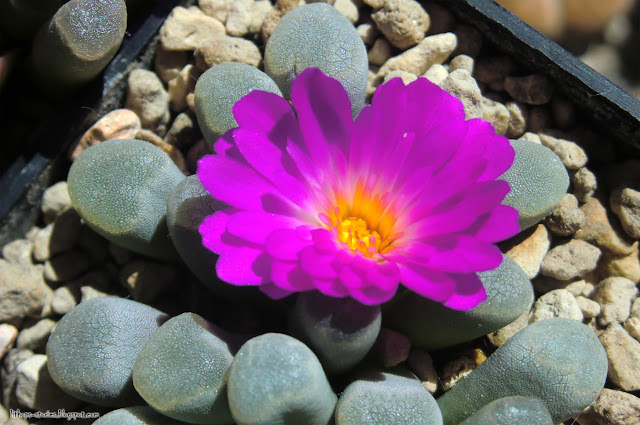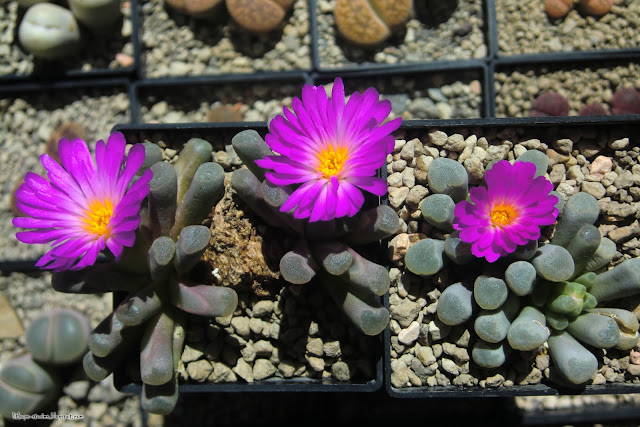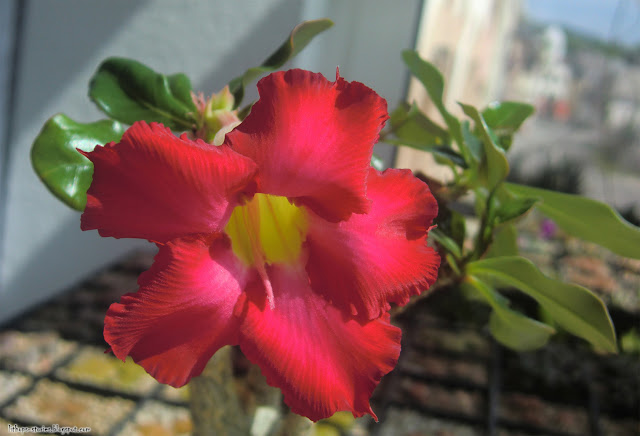It feels like we haven't had a real Spring this year. It started just recently, if at all, and will probably just jump into Summer directly. Maybe because of that or maybe because of reasons of their own my Anacampseros plants just recently woke up. While somewhere else there are already buds and flowers, mine are still pushing new leaves to compensate for Winter losses. Anacampseros are inactive in Winter. They don't grow at all and look very scruffy, dead even, drying off leaves and leaving dead twigs. Same goes for
seedlings, I had to find out. I was starting to worry because they were so brown and lifeless, and then I saw bugs on them and thought I'll lose them all. I'm still quite new to this.
But then the sun was shining and they were getting watered regularly and then fresh green appeared on the old leaves, new leaves started growing. And with them even some flower buds.
Anacampseros lanceolata
Anacampseros lancifolia
Anacampseros sp.
I called the kids of that first plant above "weeds" last year. This year, after a dry winter, the new leaves look much better. Instead of being floppy like those grown last year they are short and meaty. Hope to keep them that way.
The rest of the seedlings have grown into little round rosettes with neat fluffy fur. It is quite exciting to see them slowly develop the features of adult plants. I can even attempt some individual portraits.
Anacampseros baeseckei will grow into long fluffy towers with short leaves. At the moment they are just round. They all are from different localities. If you want to know the catalog number and other info click on the pics. The details will be in the file name.
Anacampseros namaquensis should be larger and bushier. Lots of fluff there! Can't even see the leaves on those MG7042.
Unlike these Anacampseros retusa fa. rubra. The kids have very little hairs but the flat heart-shaped leaves are the more interesting.
Anacampseros arachnoides should later have short pointy leaves with cobwebs kinda stuck to them.
Anacampseros telephiastrum should have large round meaty leaves. Mine are still small.
These Anacampseros sp. (albidiflora) look very promising with the pointy leaves.
Not sure how Anacampseros filamentosa are supposed to look like later. We'll see. They are cure little kids.
These are some of the older seedlings. I had hoped they would flower this year but no sign of it yet. I'm very fond of their overall shape.
Anacampseros rufescens can get sloppy easily, from what I see. I should keep them on a strict diet.
Anacampseros rufescens 'Sunrise'
I don't know what these are (An. rufescens?) but the color is great! The new leaves have not managed to get the tan yet.
In my excitement of seeing Anacampseros seedlings revived like this after watering I kinda overdid it with An. vanthielii. Diet!
I also have some younger seedlings (6 months old). I've been watering them though the Winter.
As a conclusion, growing Anacampseros is very rewarding and fun and I can recommend it to everyone.
PS: Hope the cat hair is not too noticeable on the photos. Mila regularly walks on them. It does not seem to damage them though. She also walks on lithops. Which is yet another reason to keep them nice and flat.

